The Mint Museum has pieces of its collection spread across two buildings; Mint Museum Uptown and Mint Museum Randolph. These collections can be seen on view alongside our special exhibitions.
The Mint Museum is working diligently to ensure that all objects from our collection are represented on our website, at this time only a portion are available for view.
stoneware salt glaze
Not currently on view
Gift of the Mint Museum Auxiliary and Daisy Wade Bridges from the Collection of Walter and Dorothy Auman
The Craven family is one of the most notable North Carolina potting dynasties, beginning with Peter Craven (circa 1712–1791), who moved to North Carolina around 1745. John Anderson Craven and his three brothers, William Nicholas, Jacob Dorris, and Thomas Wesley, learned how to pot from their father, the Reverend Anderson Craven (1801–1872). John Anderson worked in partnership with his father throughout his life, while his brothers left home to start their own pottery workshops once they reached adulthood.
Accession Number: H1983.190.1
Measurements:
Copyright Information:
public domain
In order to access a high-resolution image, please submit a request via the Mint’s Reproduction Request Form. Fees may apply.
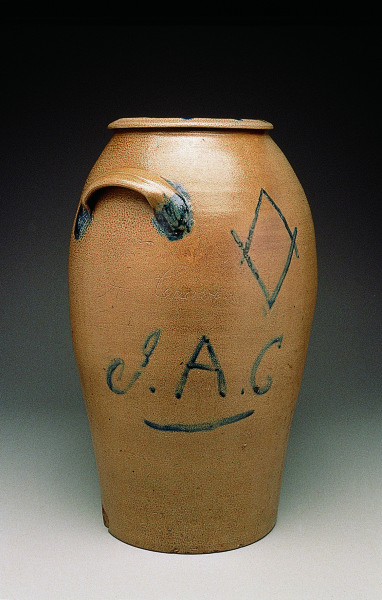
stoneware salt glaze
Currently on view at
Gift of the Mint Museum Auxiliary and Daisy Wade Bridges from the Collection of Walter and Dorothy Auman
The Craven family is one of the most notable North Carolina potting dynasties, beginning with Peter Craven (circa 1712–1791), who moved to North Carolina around 1745. Fifth-generation Craven potter Jacob Dorris Craven was one of the most prolific potters in North Carolina, producing as much as 6,000 gallons of jugs, crocks, and pitchers a year.
Accession Number: H1983.190.111.1
Measurements:
Copyright Information:
public domain
In order to access a high-resolution image, please submit a request via the Mint’s Reproduction Request Form. Fees may apply.
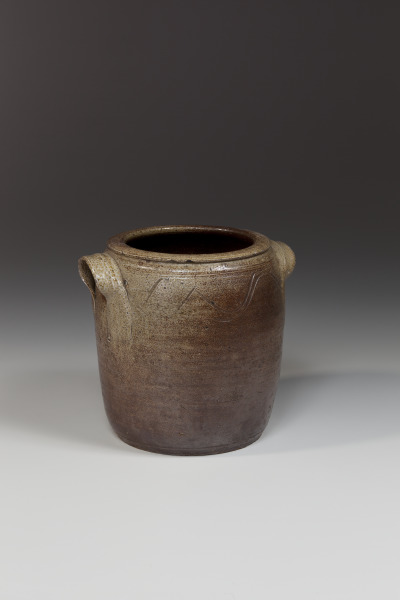
stoneware salt glaze
Not currently on view
Gift of the Mint Museum Auxiliary and Daisy Wade Bridges from the Collection of Walter and Dorothy Auman
The Craven family is one of the most notable North Carolina potting dynasties, beginning with Peter Craven (circa 1712–1791), who moved to North Carolina around 1745. John Anderson Craven and his three brothers, William Nicholas, Jacob Dorris, and Thomas Wesley, learned how to pot from their father, the Reverend Anderson Craven (1801–1872). John Anderson worked in partnership with his father throughout his life, while his brothers left home to start their own pottery workshops once they reached adulthood. Note the three bands of incised lines that decorate this jar. John Anderson and his brothers often employed this decorative motif, which they borrowed from the Fox family, another North Carolina dynasty of potters and one to whom they were related by marriage.
Accession Number: H1983.190.148
Measurements:
Copyright Information:
public domain
In order to access a high-resolution image, please submit a request via the Mint’s Reproduction Request Form. Fees may apply.
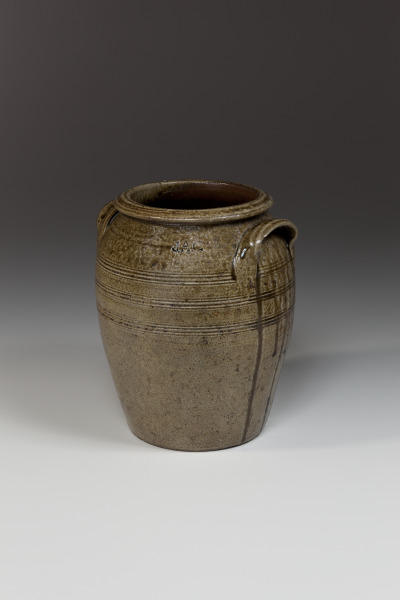
stoneware salt glaze
Not currently on view
Gift of the Mint Museum Auxiliary and Daisy Wade Bridges from the Collection of Walter and Dorothy Auman
Accession Number: H1983.190.172
Measurements:
Copyright Information:
public domain
In order to access a high-resolution image, please submit a request via the Mint’s Reproduction Request Form. Fees may apply.
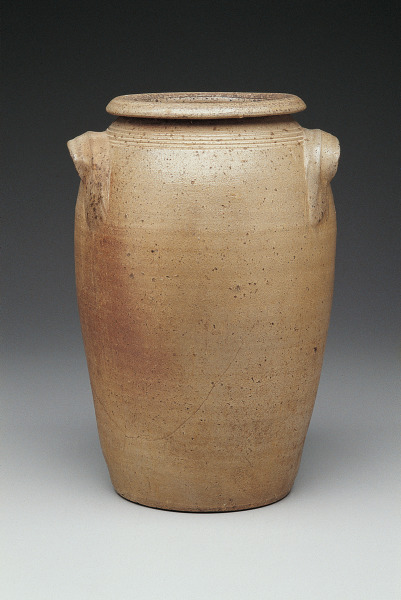
stoneware salt glaze
Not currently on view
Gift of the Mint Museum Auxiliary and Daisy Wade Bridges from the Collection of Walter and Dorothy Auman
The Craven family is one of the most notable North Carolina potting dynasties, beginning with Peter Craven (circa 1712–1791), who moved to North Carolina around 1745. Fifth-generation Craven potter Jacob Dorris Craven was one of the most prolific potters in North Carolina, producing as much as 6,000 gallons of jugs, crocks, and pitchers a year. He partnered frequently with his brother Thomas Wesley, as manifested by this jug marked “J.D. & T.W. CRAVEN”. Two of Jacob’s sons also became potters. Little work survives from Thomas, since he lived only to the age of twenty-nine.
Accession Number: H1983.190.177
Measurements:
Copyright Information:
public domain
In order to access a high-resolution image, please submit a request via the Mint’s Reproduction Request Form. Fees may apply.

white stoneware salt glaze
Not currently on view
Gift of the Mint Museum Auxiliary and Daisy Wade Bridges from the Collection of Walter and Dorothy Auman
Accession Number: H1983.190.1824
Measurements:
Copyright Information:
In order to access a high-resolution image, please submit a request via the Mint’s Reproduction Request Form. Fees may apply.
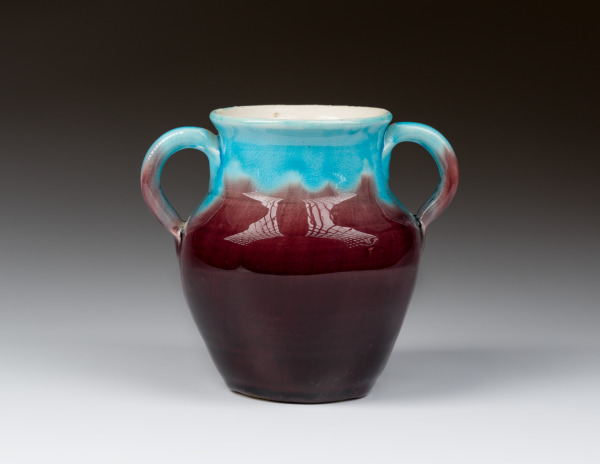
stoneware salt glaze
Not currently on view
Gift of the Mint Museum Auxiliary and Daisy Wade Bridges from the Collection of Walter and Dorothy Auman
Accession Number: H1983.190.188A-B
Measurements:
Copyright Information:
public domain
In order to access a high-resolution image, please submit a request via the Mint’s Reproduction Request Form. Fees may apply.
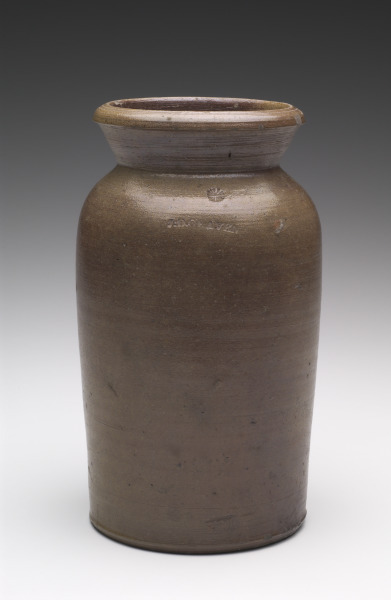
stoneware salt glaze
Not currently on view
Gift of the Mint Museum Auxiliary and Daisy Wade Bridges from the Collection of Walter and Dorothy Auman
John Anderson Craven and his three brothers, William Nicholas, Jacob Dorris, and Thomas Wesley, learned how to pot from their father, the Reverend Anderson Craven (1801–1872). John Anderson worked in partnership with his father throughout his life, while his brothers left home to start their own pottery workshops once they reached adulthood. The Craven family is one of the most notable North Carolina potting dynasties, beginning with Peter Craven (circa 1712–1791), who moved to North Carolina around 1745.
Accession Number: H1983.190.196
Measurements:
Copyright Information:
public domain
In order to access a high-resolution image, please submit a request via the Mint’s Reproduction Request Form. Fees may apply.
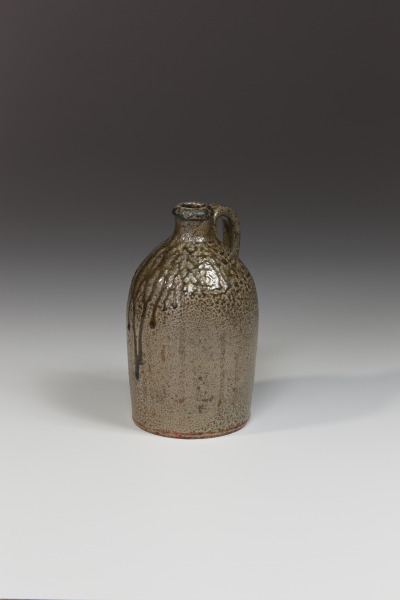
stoneware salt glaze
Not currently on view
Gift of the Mint Museum Auxiliary and Daisy Wade Bridges from the Collection of Walter and Dorothy Auman
The Craven family is one of the most notable North Carolina potting dynasties, beginning with Peter Craven (circa 1712–1791), who moved to North Carolina around 1745. Fifth-generation Craven potter Jacob Dorris Craven was one of the most prolific potters in North Carolina, producing as much as 6,000 gallons of jugs, crocks, and pitchers a year.
Accession Number: H1983.190.208
Measurements:
Copyright Information:
public domain
In order to access a high-resolution image, please submit a request via the Mint’s Reproduction Request Form. Fees may apply.
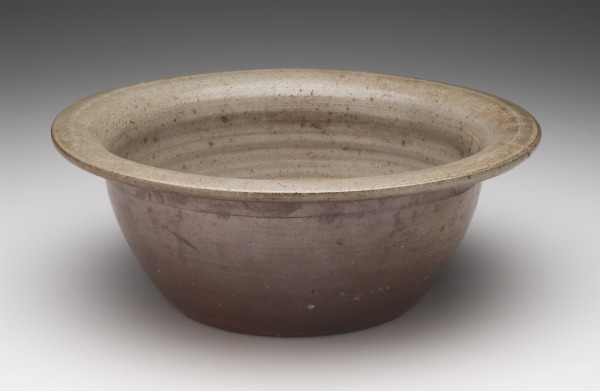
stoneware salt glaze
Not currently on view
Gift of the Mint Museum Auxiliary and Daisy Wade Bridges from the Collection of Walter and Dorothy Auman
The Craven family is one of the most notable North Carolina potting dynasties, beginning with Peter Craven (circa 1712–1791), who moved to North Carolina around 1745. Fifth-generation Craven potter Jacob Dorris Craven was one of the most prolific potters in North Carolina, producing as much as 6,000 gallons of jugs, crocks, and pitchers a year. Jacob Dorris and his brothers often decorated their wares with cobalt blue in order to compete with similarly decorated wares that were being imported into North Carolina from the north in the mid-1800s.
Accession Number: H1983.190.445
Measurements:
Copyright Information:
public domain
In order to access a high-resolution image, please submit a request via the Mint’s Reproduction Request Form. Fees may apply.
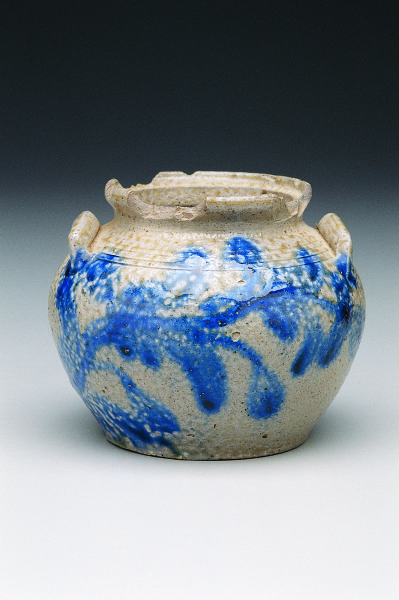
stoneware salt glaze
Not currently on view
Gift of the Mint Museum Auxiliary and Daisy Wade Bridges from the Collection of Walter and Dorothy Auman
Jacob Dorris Craven and his brother John Anderson were part of the fifth generation of Craven potters. Jacob Dorris was one of the most prolific potters in North Carolina, producing as much as 6,000 gallons of jugs, crocks, and pitchers a year.
Accession Number: H1983.190.61
Measurements:
Copyright Information:
public domain
In order to access a high-resolution image, please submit a request via the Mint’s Reproduction Request Form. Fees may apply.

stoneware salt glaze
Not currently on view
Gift of the Mint Museum Auxiliary and Daisy Wade Bridges from the Collection of Walter and Dorothy Auman
The Craven family is one of the most notable North Carolina potting dynasties, beginning with Peter Craven (circa 1712–1791), who moved to North Carolina around 1745. Fifth-generation Craven potter Jacob Dorris Craven was one of the most prolific potters in North Carolina, producing as much as 6,000 gallons of jugs, crocks, and pitchers a year.
Accession Number: H1983.190.86A-B
Measurements:
Copyright Information:
public domain
In order to access a high-resolution image, please submit a request via the Mint’s Reproduction Request Form. Fees may apply.
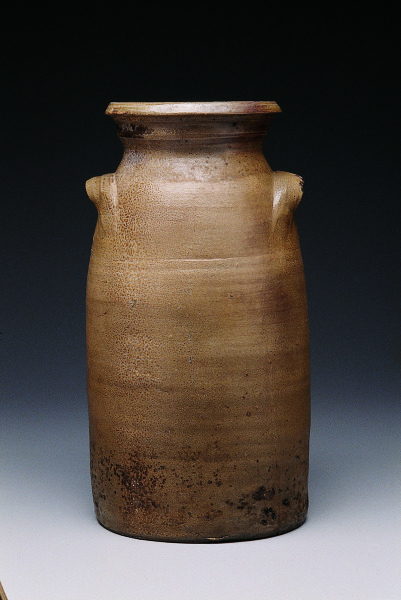
stoneware salt glaze
Not currently on view
Gift of the Mint Museum Auxiliary and Daisy Wade Bridges from the Collection of Walter and Dorothy Auman
Accession Number: H1983.190.91
Measurements:
Copyright Information:
public domain
In order to access a high-resolution image, please submit a request via the Mint’s Reproduction Request Form. Fees may apply.
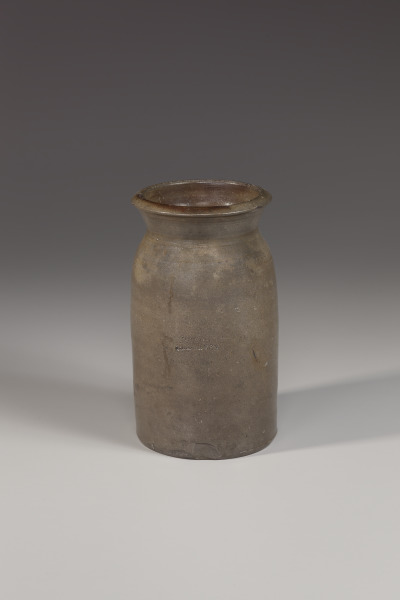
stoneware salt glaze
Not currently on view
Gift of the Mint Museum Auxiliary and Daisy Wade Bridges from the Collection of Walter and Dorothy Auman
Accession Number: H1983.190.97A-B
Measurements:
Copyright Information:
public domain
In order to access a high-resolution image, please submit a request via the Mint’s Reproduction Request Form. Fees may apply.
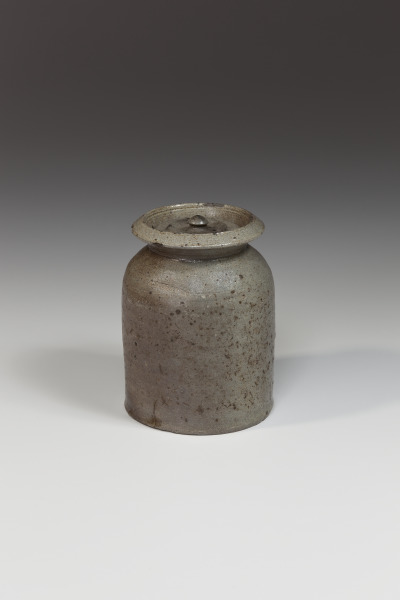
All records for works of art published on mintmuseum.org have been reviewed by curatorial staff but may be incomplete. Our collections database comprises information gathered over the museum’s history; consequently, some records may be missing information, include offensive or discriminatory language, or reflect outdated ideas and analyses. The Mint is committed to addressing these issues and revising our records so as to maintain the highest possible degree of accuracy in accordance with scholarly standards.
If you would like to suggest improvements to a record, please submit your feedback here.
The Museum assumes no responsibility for infraction of copyright laws, invasion of privacy or improper and /or illegal use that may arise from reproduction of this image. The user assumes full responsibility for the use of images obtained from the Museum, to obtain permission from copyright holders where applicable and to hold harmless the Museum and its agents against any and all damages and claims arising or resulting from the use of the images.